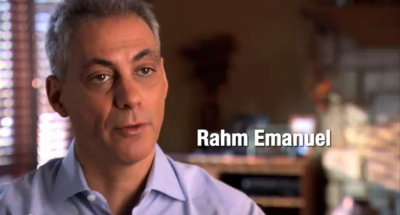Besides the political-administrative morass of a delayed presidential election and deferred donor aid decisionmaking, Haiti’s recovery has been restrained by the obstacle of rubble removal. Both Hurricane Katrina in 2005 and the January 12, 2010 earthquake in Haiti produced about the same amount of debris, 25 million to 33 million cubic yards, the equivalent of seven Hoover Dams. In New Orleans, the debris issued from wood frame houses being knocked down and tepid floodwater ruining the interiors and furnishings of houses that otherwise suffered survivable structural damage. In Port-au-Prince, the main population center for the nation’s 10 million people, the debris consists of concrete buildings leaning at crazy angles, slabs and walls, and pulverized concrete in piles like potato salad at a park picnic.
As of my September trip to Port-au-Prince, only two percent of the rubble had been removed. The photo above shows the destruction on the street where I stayed. The one below is from one of the hotels three miles away in Petionville.
In an article in the Huffington Post, Tamara Lush suggested several factors delayed rubble removal:
heavy equipment must be shipped by sea; large earthmoving equipment have a hard time negotiating the narrow, debris-filled streets; poor recordkeepiong makes it hard to determine who owns destroyed properties; no single person has assume the mantle of rubble removal czar, prompting NGOs to take on the job themselves. Lush points out that the groups often fight over small amounts of money.
In a November Newsweek article, Jeneen Interlandi notes that the slow pace of rubble removal matches the lack of capacity of either the Haitian government or the NGOs to direct large-scale disaster recovery and reconstruction. Virtually all of the rubble removal taking place in 2010 was performed by hand. The groups competing for money have demonstrated expertise in emergency relief and skills in building hospitals and schools in nondisaster situations. But competency in those areas doesn’t mean they can reconstruct entire cities. Interlandi includes a quote from Randal Perkins, CEO of AshBritt, a private company that recently won the first major contract for rubble removal from the government of Haiti. While praising the NGOs for their “amazing” work in the immediate aftermath of the earthquake, Perkins warned “that the work that’s needed now is of a much larger scale.”
Yet another issue is where to dump whatever rubble is removed. Huff Post’s Lush notes that landowners have resorted to dumping debris in the streets, canals and the countryside, there’s only one place in the entire country where NGOs using U.S. funds can take contaminated rubble: an approved and environmentally surveyed site. Even a year after the earthquake, experts in rubble removal such as one I met are certain they will encounter human remains. As Michael Zamba, the spokesperson for the Pan American Development Foundation said, “There’s a lot of contaminated rubble with human remains in it. It can’t go in a standard landfill.”
One solution may be at hand, courtesy of engineers from Georgia Tech in Atlanta. Haitian-born Dr. Reginald Desroches, returned to his homeland in the aftermath of the earthquake. His goal was to determine whether the buildings still standing were safe enough for occupancy. Dr. Desroches and his team found the concrete in Haiti to be not just substandard but extremely weak. One of his graduate students, Brett Holland, noted that “You could just scratch the surface with your thumb or finger. It was like completely different from anything here in the U.S. I was amazed.”
Learning that little landfill space was available on the island and that the Haitian government was studying dumping the rubble in the ocean, the Georgia Tech team was determined to find a way to recycle it. Bringing samples of the Haitian concrete back to Georgia Tech, they used Hait’s natural resources to turn the rubble into a stronger concrete. The process can be completed by “nearly anyone in Haiti can do themselves without the use of heavy machinery.”
Now that a runoff election between the two presidential finalists is scheduled for March 20, perhaps decisions will start to come from what had been a weakened government. Perhaps the rubble will be reborn in buildings that will re-emerge from the dusty streets of Port-au-Prince. And perhaps the decades that it takes to rebuild Haiti may be reduced if those in charge of the process listen to the ideas of the sons and daughters of Haiti like Reginald Desroches.










 An Illinois court,
An Illinois court, 

